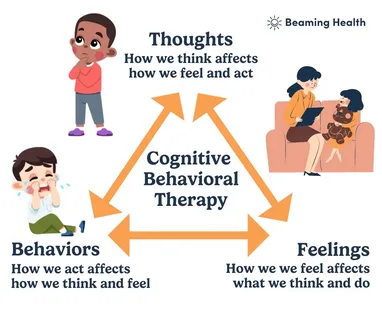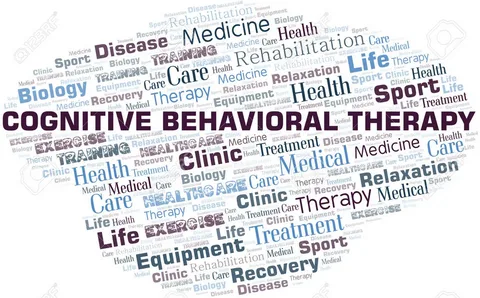CBT Techniques to Overcome Anxiety and Negative Thinking
Understanding Cognitive Behavioral Therapy (CBT)
Cognitive Behavioral Therapy (CBT) is a widely recognized and evidence-based form of psychotherapy that focuses on identifying and changing negative thought patterns and behaviors. It is particularly effective in managing mental health challenges like anxiety and depression. Unlike some traditional forms of therapy that delve into a person’s past, CBT is goal-oriented and centers on practical strategies to improve present-day functioning.
The core concept of CBT is that our thoughts, emotions, and behaviors are interconnected. By addressing the way we think, we can influence how we feel and behave. This makes CBT an empowering approach for individuals struggling with anxiety and negative thinking.
The Link Between Anxiety and Negative Thinking
Anxiety often stems from irrational fears or distorted perceptions of reality. People experiencing anxiety frequently engage in patterns of negative thinking that reinforce their fears and worries. These thoughts can become automatic, making it challenging to break the cycle.
Cognitive Behavioral Therapy (CBT) helps individuals recognize these harmful patterns. By becoming more aware of the thoughts that trigger anxiety, people can learn to challenge and reframe them. This process not only reduces anxiety but also builds resilience against future stressors.
Identifying Cognitive Distortions
One of the first steps in CBT is identifying cognitive distortions. These are biased or irrational ways of thinking that contribute to emotional distress. Common distortions include catastrophizing (expecting the worst), black-and-white thinking (seeing things as all good or all bad), and personalization (blaming yourself for things outside your control).
When someone becomes aware of these patterns, they can begin to question their accuracy. This critical thinking process is central to CBT and can significantly reduce the impact of anxiety and negativity on daily life.
Thought Records and Journaling
CBT often incorporates tools like thought records or journaling exercises to help individuals track their thoughts and emotions. By writing down a situation that triggered anxiety, the thoughts that followed, and the resulting feelings, people can start to see the connections more clearly.
After recording these thoughts, the next step is to challenge them. Are these thoughts based on facts or assumptions? What evidence supports or contradicts them? This exercise fosters a more balanced and realistic perspective, which is essential in managing anxiety.
Behavioral Activation and Exposure
Another key component of Cognitive Behavioral Therapy (CBT) is behavioral activation. When anxiety takes hold, people often avoid situations that make them uncomfortable. While this may offer short-term relief, it reinforces fear in the long run.
Behavioral activation encourages individuals to gradually engage in activities they’ve been avoiding. This can be paired with exposure techniques, where a person systematically faces their fears in a controlled and supportive environment. Over time, these experiences help reduce the power of anxiety and increase confidence.
Mindfulness and Relaxation Techniques
Although CBT is primarily a cognitive approach, it also integrates mindfulness and relaxation strategies. These techniques help individuals stay grounded in the present moment and reduce the physical symptoms of anxiety.
Breathing exercises, progressive muscle relaxation, and guided imagery are commonly used alongside CBT to enhance its effectiveness. By incorporating these tools, people can manage stress more effectively and support the cognitive work they are doing in therapy.
The Importance of Self-Compassion in CBT
Negative thinking often involves harsh self-criticism and unrealistic expectations. Cognitive Behavioral Therapy (CBT) emphasizes the development of self-compassion. Learning to treat oneself with kindness and understanding, especially during difficult times, is a powerful way to counteract anxiety.
CBT encourages the use of affirmations and realistic self-talk. By practicing compassionate responses to negative thoughts, individuals can foster a healthier internal dialogue and reduce the intensity of anxious feelings.

Setting Realistic Goals and Problem-Solving
Anxiety can make everyday tasks feel overwhelming. CBT addresses this by teaching goal-setting and problem-solving skills. Breaking down larger tasks into smaller, manageable steps helps individuals build momentum and reduce feelings of helplessness.
Problem-solving techniques in CBT involve defining the problem clearly, brainstorming possible solutions, weighing the pros and cons, and choosing a course of action. This structured approach helps people feel more in control and capable of handling challenges.
Relapse Prevention and Long-Term Maintenance
One of the strengths of CBT is its focus on relapse prevention. Individuals are equipped with tools and strategies they can use long after therapy ends. Regular practice of CBT techniques ensures lasting change and resilience.
Therapists often work with clients to create a maintenance plan, which includes identifying potential triggers, reinforcing coping strategies, and establishing support systems. This proactive approach helps sustain progress and manage anxiety over the long term.
The Role of a Therapist in CBT
While many CBT techniques can be practiced independently, working with a trained therapist can greatly enhance the experience. Therapists provide guidance, accountability, and support throughout the process. They help tailor the techniques to an individual’s unique needs and challenges.
Therapists also offer a safe space to explore difficult emotions and practice new ways of thinking. This therapeutic relationship can be a vital component of successful CBT treatment.
Why CBT Stands Out
Cognitive Behavioral Therapy (CBT) stands out for its structured, evidence-based approach. It empowers individuals to become active participants in their own recovery. Rather than focusing solely on symptom relief, CBT fosters deep, sustainable change by addressing the root causes of anxiety and negative thinking.
Research consistently supports CBT’s effectiveness across a wide range of conditions, including panic disorder, generalized anxiety disorder, social anxiety, and post-traumatic stress disorder. Its adaptability makes it suitable for diverse populations and settings.
Frequently Asked Questions (FAQ)
What is the main goal of Cognitive Behavioral Therapy (CBT)?
The main goal of CBT is to identify and change negative thought patterns and behaviors that contribute to emotional distress, such as anxiety and depression.
Can I practice CBT techniques on my own?
Yes, many CBT techniques can be practiced independently, such as journaling, thought challenging, and mindfulness. However, working with a trained therapist can enhance results.
How long does it take for CBT to work?
The duration varies depending on the individual and the issue being addressed. Many people see improvement within 5 to 20 sessions.
Is CBT only for anxiety?
No, CBT is effective for a wide range of mental health conditions, including depression, PTSD, OCD, and more. It is also useful for managing stress, anger, and sleep disorders.
Is Cognitive Behavioral Therapy (CBT) backed by research?
Yes, CBT is one of the most researched and validated forms of psychotherapy, with strong evidence supporting its effectiveness across multiple mental health issues.
Conclusion
Cognitive Behavioral Therapy (CBT) offers powerful, practical tools for overcoming anxiety and negative thinking. By identifying distorted thoughts, challenging unhelpful beliefs, and gradually changing behaviors, individuals can gain control over their mental health and improve their overall well-being.
CBT is not a quick fix, but with consistent effort and support, it leads to lasting change. Whether practiced independently or with the guidance of a therapist, CBT empowers individuals to face life’s challenges with clarity, resilience, and confidence. For anyone struggling with anxiety or negative thought patterns, Cognitive Behavioral Therapy (CBT) is a proven path toward healing and growth.
For more info about health condition Click Here.
